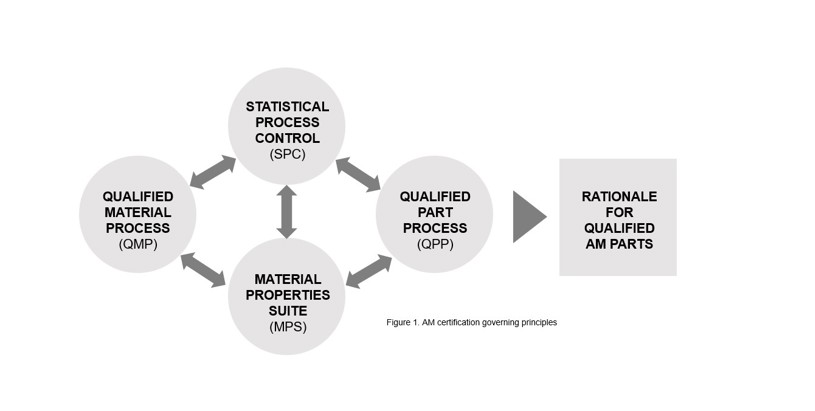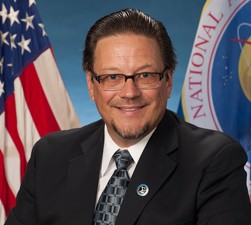Additive Manufacturing (AM) continues to become more prevalent in space applications. This is true for both NASA programs and within the commercial space sector. NASA fully embraces the advantages of AM which includes reductions in costs, lead times and part count as well as new design and performance opportunities and rapid design-fail-fix cycles. Of course, this new and rapidly expanding technology also comes with its unique challenges which need to be fully understood.
AM parts are already being used for NASA sponsored programs in critical applications. The future exploration of space, especially deep space, will require extreme reliability. In the last 30 plus years manned space flight has operated in low earth orbit (LEO). Factors which will drive a need for increased reliability in deep space as compared to LEO include the greater life span of parts, limited replacement parts and the inability to return to the safe haven of earth.
In AM, NASA has dual roles. The first is to drive and foster AM technology research and development in support of broad industry adaptation and industrialization. NASA’s second role is to develop protocols for spaceflight hardware certification for access to space that can safely meet mission objectives. To support this second role in April 2021 NASA released NASA-STD-6030, “Additive Manufacturing Requirements for Spaceflight Systems”. This standard has had an immediate impact on the aerospace AM industry.
Factors which will drive a need for increased reliability in deep space as compared to LEO include the greater life span of parts, limited replacement parts and the inability to return to the safe haven of earth
NASA-STD-6030 begins with the general requirements for an Additive Manufacturing Control Plan (AMCP) which, along with a Quality Management System (QMS), form the backbone that defines and guides the engineering and production practices. Then the requirements of NASA-STD-6030 fall into two categories. The first, foundational process control, includes the requirements for AM processes that provide the basis for reliable part design and production. These include qualification of material processes, equipment controls, personnel training, and material property development. The second category, part production control, consists of requirements typical of many aerospace operations and includes design and assessment controls, part production plans (PPPs), preproduction article processes, and AM production controls.
The interaction of the key aspects of an AM plan are shown in Figure 1. At the far left of this figure one can see one of the initial key steps which is the establishment of a Qualified Material Process (QMP). The QMP will ensure a consistent process using specified controls of the raw material feedstock and an evaluation of the process capability for each AM machine, all which are documented in a configuration controlled QMP record. The QMP uses data from machine qualification, monitored by process control metrics and SPC, which all feed into the creation of design values. The Materials Property Suite (MPS) concept includes three entities: a material property database; a subset of that database used to derive and implement a Process Control Reference Distribution (PCRD), which provides SPC criteria for witness test evaluation; and a maintained set of material allowables and design values for part design. Integrating simple SPC concepts to monitor the process and substantiate the integrity of material allowables is a unique aspect of NASA-STD-6030 and is necessary given the process-sensitive nature of AM. The QMP becomes the foundation for the establishment of the MPS which along with SPC lead to part qualification. Then the Qualified Part Process can be established, and production of a pre-production article and ultimately flight parts can begin.

Figure 1 – AM Certification Governing Principles
The fracture control methodologies that NASA uses for the qualification of critical spaceflight hardware is heavily reliant on a full understanding of the design, analysis, testing, inspection, and tracking of hardware. New advances in additive manufacturing technologies have quickly created unique challenges that are not captured in the current NASA-STD-6030 framework. Examples include the use of multiple lasers, adaptive technologies, and components that cannot be inspected using quantitative nondestructive evaluation. To adapt, NASA has begun to explore the adaptation of Probabilistic Damage Tolerance Approaches (PDTA). These approaches include the development of computational modeling, understanding the “effect of defects,” and the implementation of in-situ monitoring and inspection techniques.
For computational modeling, both the design and hardware need to demonstrate that they meet all the requirements of the design mission. Opportunities for computationally assisted qualification and certification must focus on augmenting the existing processes, not replacing them. And such tools will require verification and validation.
NASA has kicked off studies related to understanding the effects of defects. These defects can be divided into two categories, inherent and rogue (or process escape) defects. This work will be done in three phases: understanding inherent defects, using process controls to control inherent defect populations, and understanding rogue defects. An attempt will be made to determine the feasibility of using Process Failure Modes and Effects Analysis (P-FMEA) to understand the characteristics and occurrence likelihood of potential rogue AM defects.
Finally, NASA is investigating the implementation of using in-situ monitoring for both process control and quantitatively monitoring part quality. A workshop is planned for late June 2022 and the results of this workshop will be published and presented at the Additive International Conference.

Richard W Russell is a Technical Fellow at NASA's Engineering & Safety Centre,
With additional input from:
- Alison Park- NASA Langley Research Centre
- Douglas Wells & Brian West, Erin Lanigan and Will Tilson- NASA Marshall Space Flight Centre
- Bryan McEnerney- NASA Jet Propulsion Laboratory
- Andrew Glendening - NASA NASA Goddard Spaceflight Center
You can hear more from Richard, as well as a host of AM leaders, visionaries and innovators from around the world at this year's Additive International summit, In Nottingham from 13-14th July. Visit https://www.additiveinternational.com/ for more details.











Water Sector Talent Exodus Could Cripple The Sector
'Capricious changes of priority by the general public'?!? Surely the public would demand both sufficient water supply and sufficient waste...